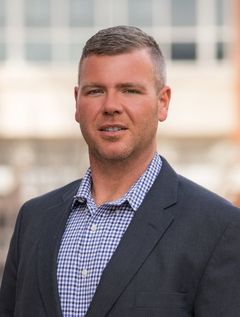Creating a sense of community is key when connecting to active agers in group fitness classes. These participants want to be challenged while having a great time in class. As an instructor, balancing those two can be a challenge. Whether you are a seasoned instructor skilled in teaching active agers or new to that demographic, here are six tips for helping your participants stay forever fit.
- Choose music wisely.
When planning music, keep your audience in mind and offer a variety of music. Don’t be afraid to throw in a few current hits or popular line dances to add spice to your class. Think about subscribing to a music app, such as Power Music or Yes! Go, for a wide range of choices for genres and playlists, and the option of changing the BPM.
In addition to music selection, be mindful of volume. The goal is to have the music loud enough for the group to hear it, but also at a level where they can hear you. The American Council of Exercise recommends keeping the decibel level at 85 or below.
Pro tip: When I teach active agers, we have a system in which they point to their mouths for my voice volume and their ears for music volume with a thumbs up or thumbs down to indicate whether the volume is too loud or too low.
- Offer exercise variety for different levels.
Just like any other group of participants, active agers have a variety of skill sets and experience. I once had a participant (who happened to be a former fitness instructor) tell me they wished instructors understood that they are not chair-bound and can still move—they just can’t move like they are 20 years old anymore. To make class a positive experience, always provide multiple levels of an exercise so all can feel successful. Positive affirmation is key to connection.
- Challenge physical and mental strength.
When you think of a challenge, high-intensity interval training or an all-out finisher may come to mind. With active agers, reframe your mindset to include mental challenges in combination with physical exercises. For example, instruct participants to raise their right knee and left arm or to walk across the room laterally while looking forward. Balance is a significant concern among many older adults, and incorporating this form of training in your class can be hugely beneficial (Salzman, 2010). Also, think about incorporating one or two hi-lo or dance combinations; choreography can stimulate the brain and may offer a protective effect against early onset of dementia in older adults (Burzynska et al., 2016). Offering a variety of activities for seniors is essential to healthy living.
- Be mindful of language.
The exercise environment includes a range of experiences and generations. Always be respectful when addressing the group by using language such as, “Good afternoon, ladies and gentlemen.” Take this into consideration when delivering cues, too. Keep cues clear and concise; let each one land with spacing. Consider these questions when cueing:
- What is the exercise or movement?
- When should they be performing this exercise or movement?
- How should they be performing this exercise or movement?
- Where they should be feeling this exercise or movement?
- Build rapport with participants.
Social well-being is essential when it comes to active aging and healthy living (Seeman et al., 2001). Ask participants why they come to class, and you may hear that it is to socialize. Remember, your class may be the only social interaction some people have during their entire day, so make it positive. This can be achieved by learning everyone's name, asking about their day or inquiring if they have any upcoming events. Some participants build relationships by engaging in social opportunities outside of class. I teach in a heavily populated retirement destination, where many participants lived other places their entire lives. They’ve built a community network from their classes and organized events such as quarterly lunches and birthday parties. Going the extra mile is always a winning strategy in group fitness; however, with active agers it may mean even more.
-
Include functional movements.
When planning activities for seniors, functional movements that are transferable to their daily lives is fundamental to living independently. Frequent, but challenging tasks for some may include reaching for an item overhead or bending down to tie a shoe. As an instructor, it is important to understand that your participants’ goals are likely focused on being functionally fit for life. Consider including exercises such as squats, shoulder presses, wood chops and knee lifts in your programming.
A sample (60-minute) class may look like this:
- Warm-up and 2 simple hi-lo combos (35 minutes)
- Resistance training using light weights (12-15 minutes)
- Functional or yoga- or barre-inspired movements with a cool-down (12-15 minutes)
References
Burzynska, A.Z. et al. (2017). White matter integrity declined over 6 months, but dance intervention improved integrity of the fornix of older adults. Frontiers in Aging Neuroscience, 9, 59.
Salzman, B. (2010). Gait and balance disorders in older adults. American Family Physician, 82, 1, 61-68.
Seeman, T.E. et al. (2001). Social relationships, social support, and patterns of cognitive aging in healthy, high-functioning older adults: MacArthur studies of successful aging. Health Psychology, 20, 4, 243-255.




 by
by 








 by
by